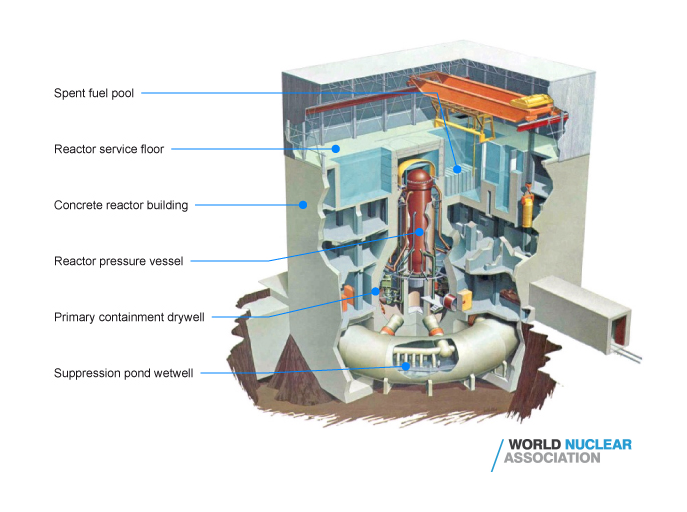In March of 2011, there was an earthquake northeast of Japan. It created a tsunami that flooded the Fukushima nuclear power plant on the coast of the Japanese island of Honshu. The tsunami flooded the emergency generators which provided power for the cooling pumps in the reactors. Without the emergency generators, the cooling systems failed and three of the six reactors melted down. There was a huge explosion in reactor Three that destroyed the building that contained reactor Four. The ruined reactor buildings were very radioactive and, in some areas, impossible to inspect.
Years have passed and the buildings have cooled off a bit. There have been a succession of attempts, mostly unsuccessful, to send robots in to inspect the damage and try to find out what has happened to the fuel in the reactor cores. There is an estimated six hundred metric tons of melted fuel mixed with debris called “corium” between the three reactors that melted down. The meltdowns ruptured the pressure vessel containing the reactors cores and poured corium down into the bottom of the reactor buildings.
The most recent robot has returned pictures that show globs of molten corium in the lower levels ruins of reactor Three. It has been estimated that the cleanup of the three reactors may take forty years and cost over seventy two billion dollars. Different approaches are being considered for cleaning up the corium although some may require technology that does not exist yet.
An adviser to Tepco, the company that owns and operated the Fukushima nuclear power plant, said “Special tools and techniques will have to be developed to undertake such a task that has never been attempted before anywhere in the world. Once Tepco has identified the characteristics of this material, then they can develop a plan to remove this material in a safe manner.” Three different possible ways to get the corium out of the ruined reactor are being explored.
An existing access hatch could be easily modified to allow the corium to be removed through the side of the reactor without extensive construction or excavation. One problem with this approach is that while it makes it relatively easy to get to the corium in the lower levels of the reactor building, it will be more difficult to remove corium that stayed in the pressure vessel higher up in the building.
A containment building could be constructed above the ruined reactor to limit radiation release. Then the top of the reactor would be removed and the entire reactor including the pressure vessel and the lower levels would be flooded with water to cool the radioactivity. The corium could be removed as the radiation level is controlled by the water.
A tunnel could be dug under the reactor building. Then all the water would be drained out of the ruins. Following that, the corium would be removed. A big problem with this approach is the fact that without cooling water, the level of radiation would be higher and more dangerous as the corium was removed than the other approaches.
The Nuclear Damage Compensation & Decommissioning Facilitation Corporation is a Japanese government agency with a major stake in Tepco. They say that work on decommissioning Fukushima should concentrate of the creation of technology and procedures for removing the corium through the side of the reactors. A decision on what approach to take will be made in September of this year according to an Industry Minister.
